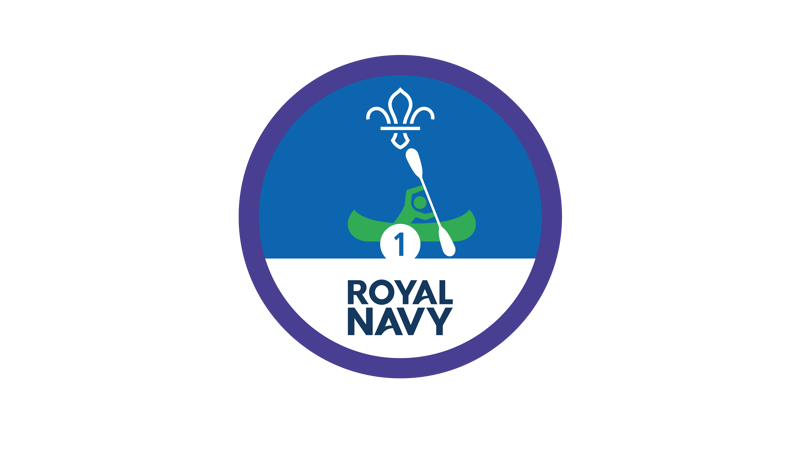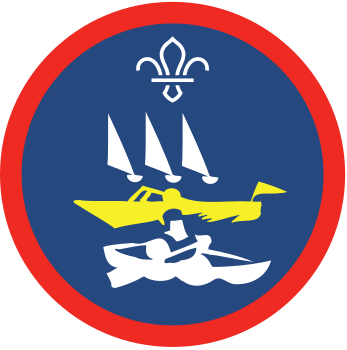
Windsurfing
What to expect
Windsurfing’s a bit like taking surfing and sailing and mixing them together. The wind will power you to glide across the water on a specially-designed surfboard with a sail. It might take a few tries to get the hang of it, but once you’ve got to grips with controlling the board you’ll be able to enjoy the view as you gracefully soar across the open water. You can enjoy windsurfing inland and at the coast – it’s up to you whether you want to sail across flat water or ride waves.
Your local Scout Adventures centre can run sessions and provide training, so get in touch to see if they can help you take to the water. It’s always worth chatting to your District Commissioner too – they may have the lowdown on other local providers.
What you’ll learn
Windsurfing gives you the chance to enjoy the open water and practise your balance and coordination at the same time. The more you practise these skills, the less you’ll fall in – but it’s just as important to pick yourself up and try again when you do make a splash.
Fun facts
Windsurfing’s an Olympic sport – it’s been included since 1984.
Handy hints
- Dress for the occasion. Check with the centre to make sure you know what to wear and take with you – they might have rules about the clothes or shoes you wear, for example.
- Grab some extra hair bobbles. People with long hair will probably need to tie it back. Take a few extra hair ties, just in case anyone forgets.
- Have something else planned. If you’ll have to take it in turns, prepare another activity to keep everyone entertained when it isn’t their turn on the water.
- Be ready to swish and sway. If anyone in your group experiences motion sickness, chat to them to come up with a plan. What do they usually do to manage their symptoms? Do they (or you) need to bring anything to help?
Safety
You must always:
- Complete a risk assessment
- Have the right ratios of number of adults to provide suitable supervision
- Set up an InTouch process
- Know what to do in an emergency
- Share information with parents and carers with an activity information form
- Get approval from your commissioner
Be safe outdoors:
- Check the weather forecast
Be safe in water:
Everyone should be able to swim 50 m wearing the clothing or equipment for the activity. Non-swimmers will need additional support.
Water can be dangerous - be aware of the risks.
The category of water depends on how safe the water is. Use our waterways directory to check.
Be sure to manage the group when near water, keeping everyone safe.
Make sure that all equipment is fit for purpose and in good condition:
Everyone must wear a life jacket or buoyancy aid.
The instructor must make sure boats are seaworthy.
There are regulations you must follow if you are hiring a boat.
Joint activities with other organisations:
- This activity can be run jointly with Girlguiding.
- This activity can be run with other organisations.
This activity can be led by you or someone else in Scouts:
The activity leader must have an adventurous activities permit with the right level and permissions for your group.
You don't need a permit for activities on Class C waters (safe, inland water less than 100 m wide).
Where the group is entirely members over the age of 18 the permit scheme does not apply, please follow the rule 9.8 adult groups.
You can go to a centre or use an activity leader who is not part of Scouting:
You must find a suitable provider who meets the following requirements:- The centre/instructor should hold one of these: (If the provider is AALA exempt)
- Royal Yachting Association - Windsurfing Instructor
The provider must have public liability insurance.
Guidance
Reflection
Royal Yachting Association coursesWindsurfing gave people an opportunity to value the outdoors. People need to navigate on the water while staying in control of the board and sail. How was it different compared to navigating on land? How did rules for the water affect navigation? People had to rely on the wind to get them moving. Was it ever frustrating? Did anyone notice anything about the outdoors and wildlife while travelling in a new way?
Windsurfing was also a new way to be active. Was it harder than it looked? What did people find the most challenging? People may have found it difficult to keep their balance or to control the board. Did anyone end up in the water? How long did it take people to find a comfortable point of balance, even if it was just for a few moments? People could think about how important it was to not give up – and how this makes a difference in lots of sports.
You’ll find boards and sails of various sizes, so most people should be able to find one that suits them. Ask whoever’s leading the activity if certain equipment will make it easier for people to get started.
Windsurfing can often be adapted so more people can give it a go. Many outdoor centres have facilities that cater for people with additional needs and experienced instructors to help everyone achieve their goals. Get in touch with your local provider to chat through the needs of people in your group – make sure you give them plenty of notice.
All Scout activities should be inclusive and accessible.
Anyone who enjoyed windsurfing could look at other watery adventures such as dinghy sailing or yachting. If they’ve mastered windsurfing, kitesurfing could be a fun new challenge.
There are lots of options for people who are interested in courses – the Royal Yachting Association has more information on their website.
Anyone who’s tried windsurfing before could share what they learned with everyone else before you get stuck in. It doesn’t have to be a formal presentation – they could just have a chat and answer people’s questions.


